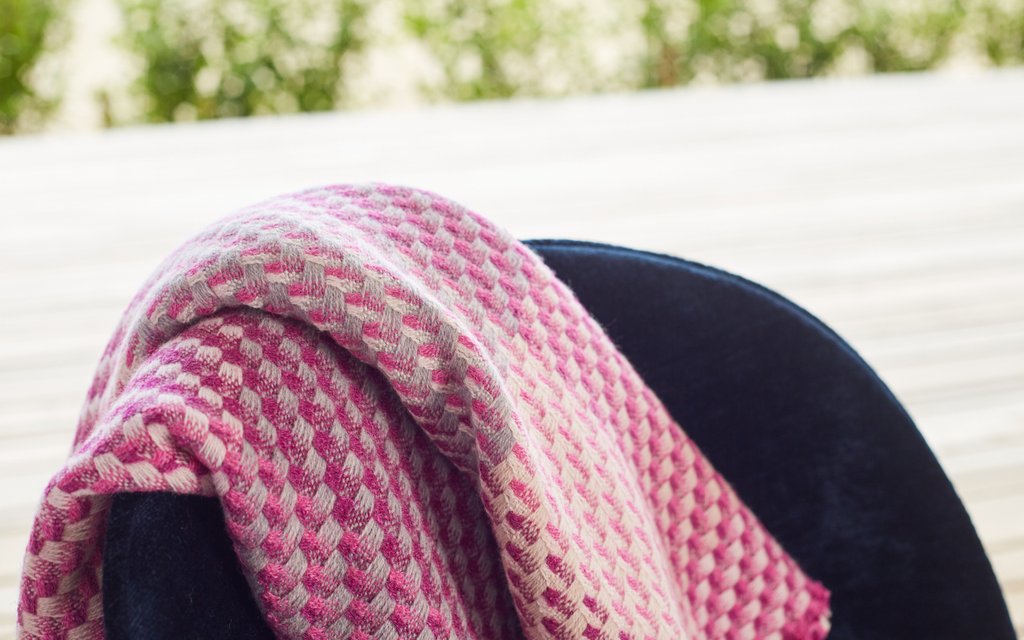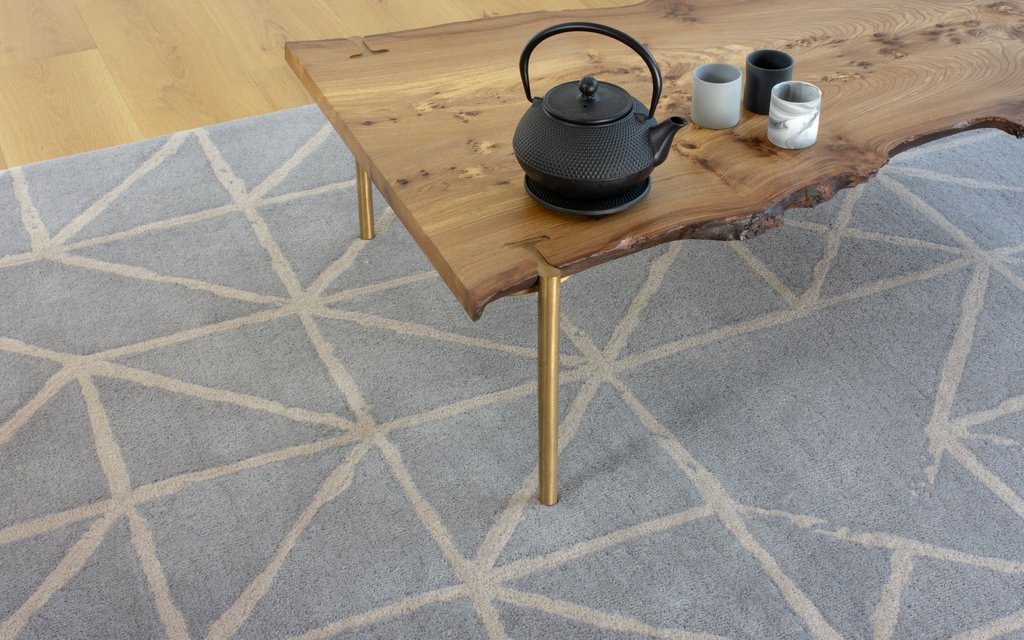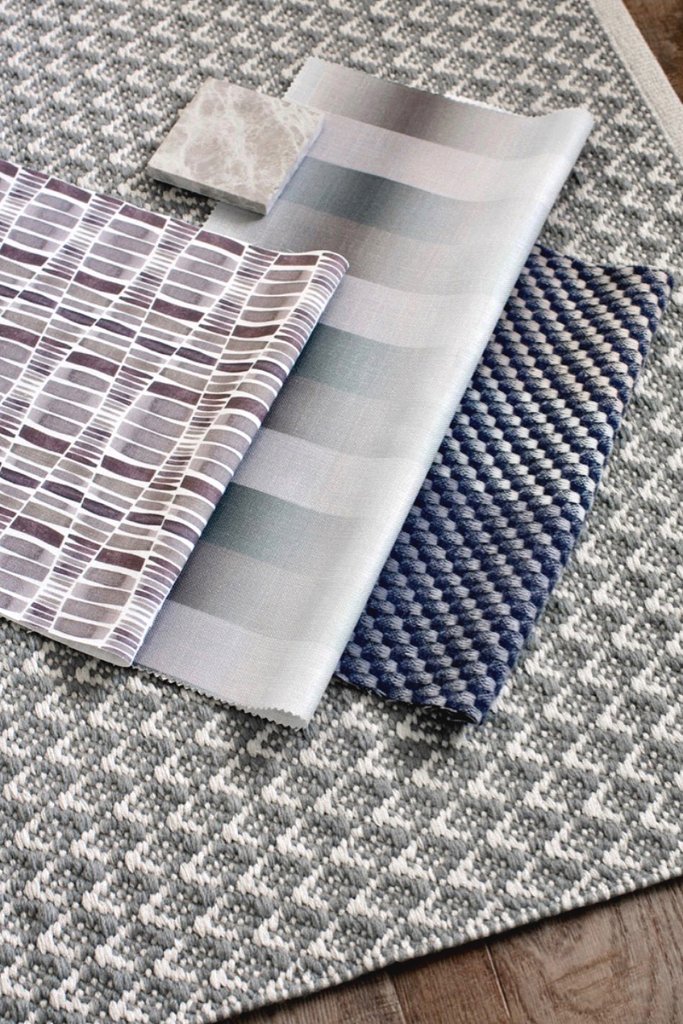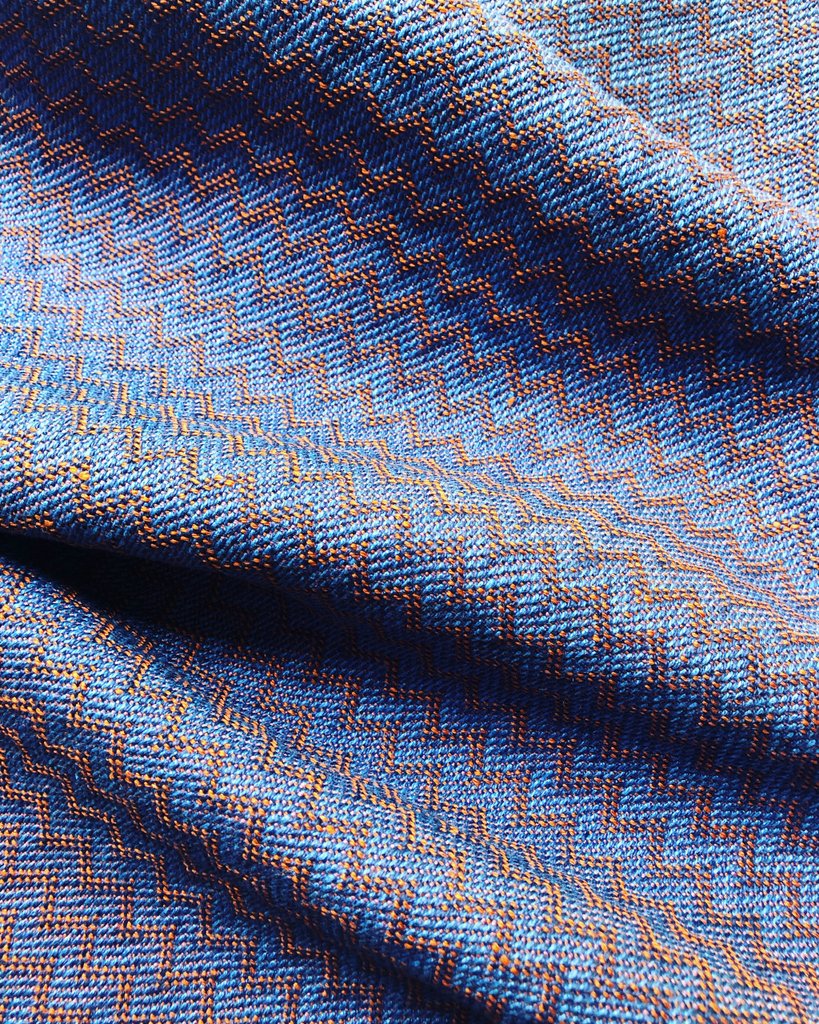Your Cart is Empty

Nature’s colours, patterns and textures are discussed in many of our conversations with clients. And it seems that textures and materials that reference nature often have the ability to resonate positively with people. They have a natural authenticity that we connect with; this is one of the reasons we work primarily with natural fibres such as wool and linen for our collections.

Magenta Throw, 25% silk 25% merino 50% lambswool
Nature offers an array of multi-sensory elements that intrinsically connect us to the world around us – from inspirational colours and patterns to rich, diverse and layered textures. We live in a highly sensory world, and design too is multi-sensory. Our visual experiences are enriched by touch, sound, smell and taste, and vice versa. While our immediate reaction to an environment may be first determined by what we see - and primarily, colour - the textural make-up of the environment effects how we actually see these colours. Smooth, shiny surfaces may reflect more light back into the space, while deeply textured woven items will respond differently to the same colours.

Claire Gaudion, Guernsey Rug in 100% wool, cut pile
Material and textural inspiration from nature is everywhere. From the coarseness of tree bark, to rippling patterns on the surface of the sea or the silky soft finish of a newly unfurled leaf. Biomorphic forms and patterns, such as contoured, patterned and even numerical arrangements found in nature can be translated into tactile experiences through different weave structures, and yarn and colour combinations that mimic nature’s rich variety of texture. A rich and diverse range of materials – as found in nature – creates the best interior design results. Think layering of textures, and contrasting of colours, forms and finishes.

Claire Gaudion, Roque Noir Rug in linen and wool, handwoven
Nature also holds positive memories for many people from holidays, or time relaxing outdoors, and surrounding ourselves with design references that capture these memories seems to bring happiness to people in their homes. And, just as with colours, individuals also have personal material preferences. Some people may prefer the cool softness of woven linen, others the springy soft lustre of a knotted wool rug. Often it is a combination of tactile qualities that creates the best results.

Claire Gaudion, 100% organic linen fabric, available to order
There are many ways that materiality and nature can influence interior design with positive effects. These may be through direct nature references or design analogues such as colour, pattern and texture.
One of the stand-out messages from recent nature-inspired design research is that using a diverse range of textures and colours and including variations in patterns creates better and more effective Biophilic design, and thereby brings more positive wellbeing effects – in this way it is also mimicking nature. You can read more about biophilic design and biomimicry on our blog, HERE.